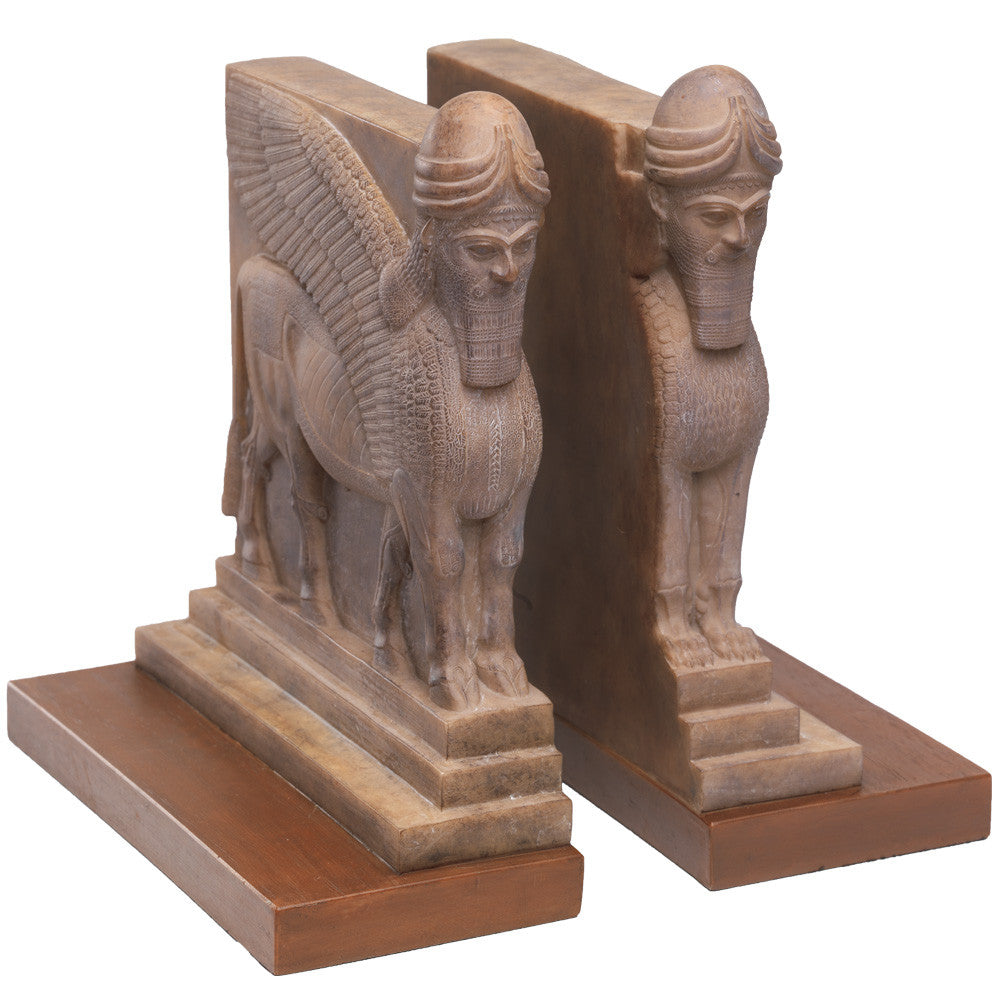Kipling de Freitas
Assyrian Palace Guard Bookends - Mesopotamian Sculpture
Couldn't load pickup availability
These bookends are a gift of art that remind us of the evanescent nature of human power. They are a fine representation of Mesopotamian statuary: the colossal stone statues and reliefs that embellished the façades of ancient Assyrian temples and palaces.
The Assyrian Empire is regarded as the greatest of the Mesopotamian empires. It grew from humble beginnings. According to the Biblical account in Genesis, the city of Ashur from which the empire rose, was founded by a grandson of Noah’s named Ashur. What is more likely is that the city was named after the deity, Ashur. Starting from Mesopotamia (now Iraq), the empire expanded to include modern day Turkey, parts of Egypt, and Persia. Its history is usually divided into three periods: The Old Kingdom, the Middle Kingdom, and the Late or Neo-Assyrian Empire.
During the Late Empire, a great king bearing, significantly, the name of Ashurbanipal (668 – 627 BCE) came to the throne. He is noted for his scholarship and the vast library he erected in his palace at Nineveh. In 612 BCE, Nineveh was sacked and burnt to the ground. Ironically, the fires at the palace library baked and so preserved the clay tablets held there. And, thus, Assyrian history has lived on.
Another king, with a similar name, Ashurnasirpal II (883 – 859 BCE) constructed a huge residence, stretching over some six acres, at Nimrūd, also known as Kalakh or Kalhu. These bookends take their design from carved supporting sculptures of that palace. The lamassu or divine guardians guarded the palace portals. One is a winged bull; the other is a winged lion. They both have human heads. Their horned caps signify divinity; their belts are symbols of power. And they have five legs. This may have been meant to signify their divine nature or, as has been suggested, simply an ancient form of Cubism.
Set of two (2) hand patinated cast resin bookends each measuring 9.5'' Height x 4'' Width x 8.25'' Depth
Share

